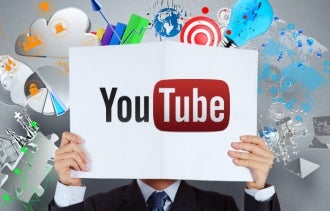YouTube has become a hot site for businesses looking to promote their products and services. But not every business gets acceptable results from their YouTube marketing videos.
Success on YouTube depends on what you want to accomplish with your online videos. So, before you press the record button your video camera, answer some key questions about your YouTube video strategy.
1. Should your business even be on YouTube?
Not every type of business is a good fit for YouTube. Put simply, if you can't show your product or service in action, don't put it on YouTube.
For example, if you sell or manufacture power tools, it can be easy to show how a power drill works in a short video. But if you offer college-tutoring services, you don't have much to demonstrate on camera, so YouTube might not make sense.
Even if you can demonstrate what you do in videos, you still need to set a clear goal for what you hope to accomplish. Your goal will help you determine what type of video to produce.
2. Do you want to attract new customers or support existing ones?
For many companies, YouTube is an ideal medium for attracting new customers. You pull them in by showing them your product and how it works, and then direct them to your website for more information or to close the sale. Since you can't link directly from a video, you'll need to superimpose your URL onscreen and include the URL in the video's text description.
You also can use YouTube to provide additional information and support to existing customers. For example, if you sell children's outdoor playsets, you might produce a video showing how to assemble them. A how-to video can be much more effective than printed instructions, and can cut down the volume of post-sale customer support calls.
3. Do you want to inform or educate with your video?
The most successful YouTube videos tend to accomplish one of three things: inform, educate or entertain. While entertaining videos are the most likely to go viral, they're also the most difficult to pull off. That's why most businesses focus on either informing or educating with their videos.
An informative video can provide details about a specific product, your company or industry, or simply topics of interest to potential customers. For example, if you're an attorney, you might produce a series of videos that discuss important legal issues. If you run a bed and breakfast, you might offer video tours of your facilities.
An educational video shows customers how to do something, typically in step-by-step fashion. For example, if you sell computer-networking equipment, you might produce a video that shows customers how to set up a home network -- using your equipment, of course. If you sell musical instruments, it's a no-brainer to offer a series of music instruction videos.
Some businesses naturally gravitate to either an informative or educational approach, while others can go either way. For example, if you run a restaurant, you could produce informative videos that show your top dishes in attractive settings, or you could produce educational videos that show customers how to cook their own versions of some of your favorite recipes.
Whether you take the informative or educational video approach depends a lot on your company's image and your own personal style. But whichever approach you take, remember that YouTube is a soft sell medium, meaning viewers tend to reject direct commercial messages. Offer potential customers something useful, however, and you'll help to build your brand over the long term.
View the Original article







